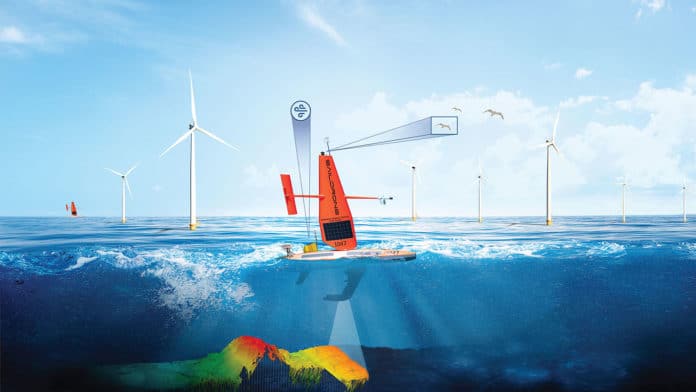Until now, the impressive capabilities of Saildrone’s autonomous vehicles have been proven in numerous operational missions for science, ocean mapping, and maritime security. Now the company has unveiled its Offshore Wind Life Cycle solutions that, it says, will help make new offshore wind farms a reality.
Like their on-land counterparts, offshore wind farms provide clean, renewable energy. However, offshore wind speeds tend to be faster and more consistent than overland. This increases their potential to generate more electricity at a steadier rate than their onshore wind farms.
Offshore wind farms sector demands a large amount and variety of data throughout their life cycle. Once a site is identified for wind farm development, extensive data must be collected about the movement of water, wind conditions, ocean currents, storm wave loading, potential shipping routes, and other atmospheric and oceanographic metrics. The data from multiple sources helps advance understanding of wind, efficient design, installation, and long-term maintenance, as well as to monitor the potential impact of the wind farms.
With its 23-foot Saildrone Explorer, Saildrone demonstrated how its uncrewed surface vehicles (USVs) could collect the ocean data that is critical for the planning, development, and operation of wind farms faster and at a fraction of the cost than traditional methods.
Saildrone’s three classes of autonomous vehicles work together to autonomously collect the in-situ data wind farms need in real-time. Each vehicle is designed for specific tasks and can be deployed from any dock; no permits are required. Their innovative design efficiently delivers the critical data needed, from comprehensive real-time metocean data, including wind monitoring, high-resolution ocean mapping, persistent maritime security, and even year-round ecosystem monitoring, ensuring there is no adverse impact to the surrounding marine environment.
From the Explorer to the 72-foot Surveyor, Saildrone USVs are powered by renewable wind and solar energy with a minimal or zero operational carbon footprint. Without crew on board, Saildrones can stay on a mission from six to 12 months at a time, operating 24/7, gathering information more efficiently than by traditional manned ships. Traditional survey vessels are expensive and difficult to schedule, and inclement weather can make it dangerous, not to mention uncomfortable for human crews.
Saildrone’s passive acoustics, optical cameras, and advanced machine learning algorithms deliver real-time detection of anything in the vicinity of offshore wind farms, including boats and other vessels. It also identifies natural visitors like whales, seabirds, and bats to monitor environmental impact mitigation strategies.
